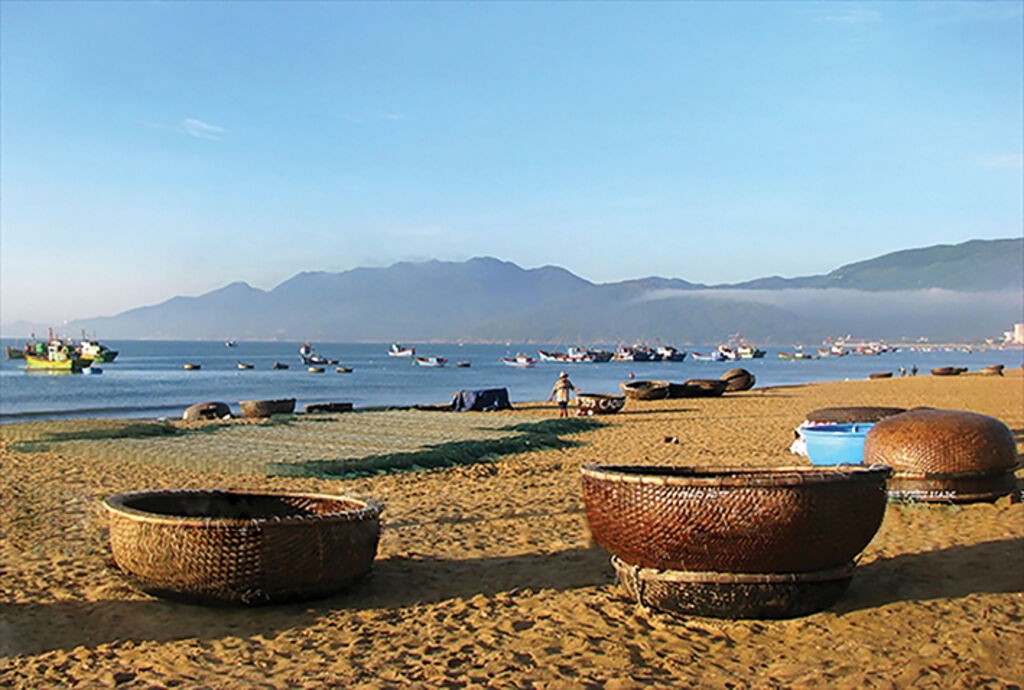 |
| Phu My basket boats along Phu Yen coast__Photo: Thanh Dat/VNA |
Phu My, a small village in An Dan commune, Tuy Hoa district of Phu Yen, neither lies near the coast nor is a fishing village but its products - bamboo basket boats can be seen everywhere in the South Central Coast.
The village’s first bamboo basket boats, also known as coracles, are believed to be woven during the French colonialism. The story goes that at that time, the French imposed heavy property taxes on small boats. As poor fishermen could not afford to pay taxes, they came up with a brilliant idea. They wove small lightweight bamboo boats that looked like baskets and, therefore, were not subject to the tax. At first, basket boats were used for shrimp and squid fishing and later as lifeboats in case of emergency. Nowadays, they carry tourists on eco-tours to explore the landscape in many localities in not only the South Central Coast but also the Mekong River delta.
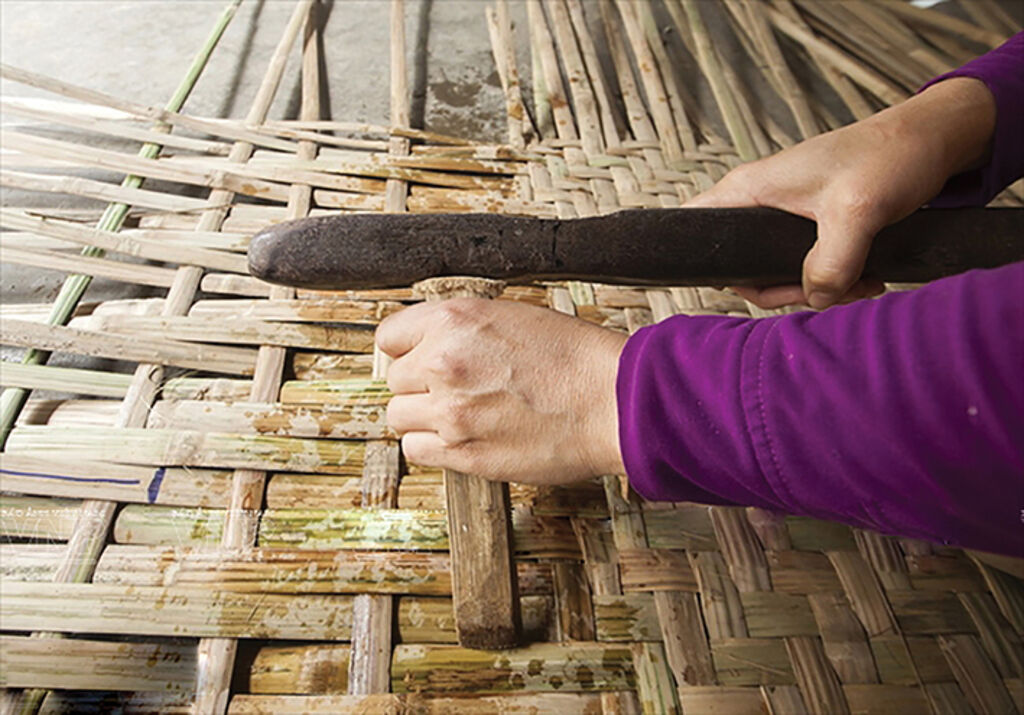 |
| Hammering to make the mat’s strips perfectly snug together__Photo: VNA |
Making a bamboo basket boat by hand requires not only experiences but also patience and meticulous care as a small mistake could make the boat leak or capsize. It usually takes an experienced boat builder a week to make a boat.
Bamboo trees along the banks of Nhan My river, which runs across the village, are the main raw materials to make basket boats. Phu My villagers believe that it is thanks to the soil and water of Nhan My river, bamboo trees grown in this area are pliable and durable.
Bamboo trees that are selected to make basket boats are those of one or one and haft years old as trees that are too old are hard and brittle while young ones are too soft. The hard lower part of bamboo trees will be used to make boats’ rims while boats’ body will be made of the upper part of bamboo trees which is softer and more pliant.
First, the craftsman scraps off the thin green outer layer of a long bamboo stem and divides the stem into long flat thin strips of the same thickness which will later be sun-dried for around two days. The artisan then weaves the bamboo strips in an over-under pattern to create a woven mat. In this step, he sprays water to wet its surface while using a small wooden chisel to push the strips of the mat to make them perfectly snug together.
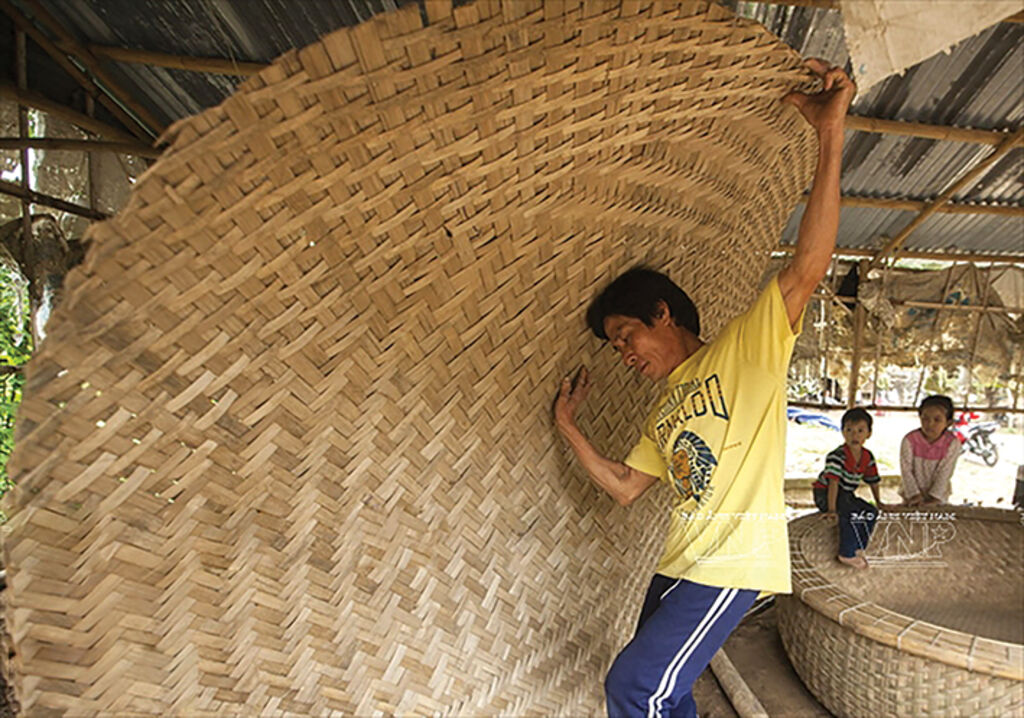 |
| Preparing to shape the woven mat into a basket__Photo: VNA |
The most noteworthy point that distinguishes the boat-making craft of Phu My villagers from those of other craft villages around the country is their boat-shaping technique.
To get the bamboo mat into the shape of a basket, the boat-maker places the carefully-dried mat into a hole of the desired size and shape which is dug in a wet sand yard and gradually bends the mat and uses a wooden pestle to thrash the mat until it completely falls into the hole. Then he uses a long pointed-tip hammer, pressing the mat against the hole wall so that wet sand will fill in the gap between the hole wall and the outer side of the mat, which, at that time, has shaped into a basket.
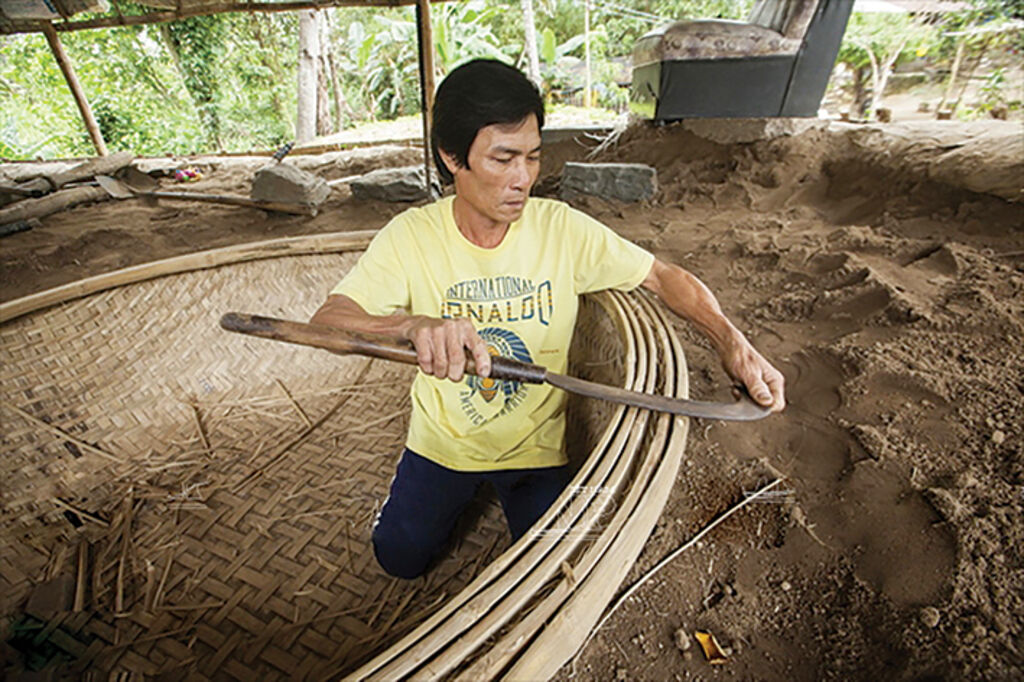 |
| Trimming excessive parts to smooth bamboo rims__Photo: VNA |
After the shaping stage is finished, the boat-maker will proceed with creating a rim for the basket boat. The number and thickness of bamboo rings needed to make the rim of a basket boat depend on the use purpose of the boat. The rim of a basket boat for near-shore fishing is composed of six or seven bamboo rings while that of a squid fishing boat may need up to 12 thick bamboo rings. These rings are looped around the edge of the basket boat by strong fibers. Afterward, the boat is left in the sun to dry. The average bamboo basket boat has a diameter of between 2 and 2.5 meters. Because of their special shapes, basket boats do not cut through the water but ride on the waves.
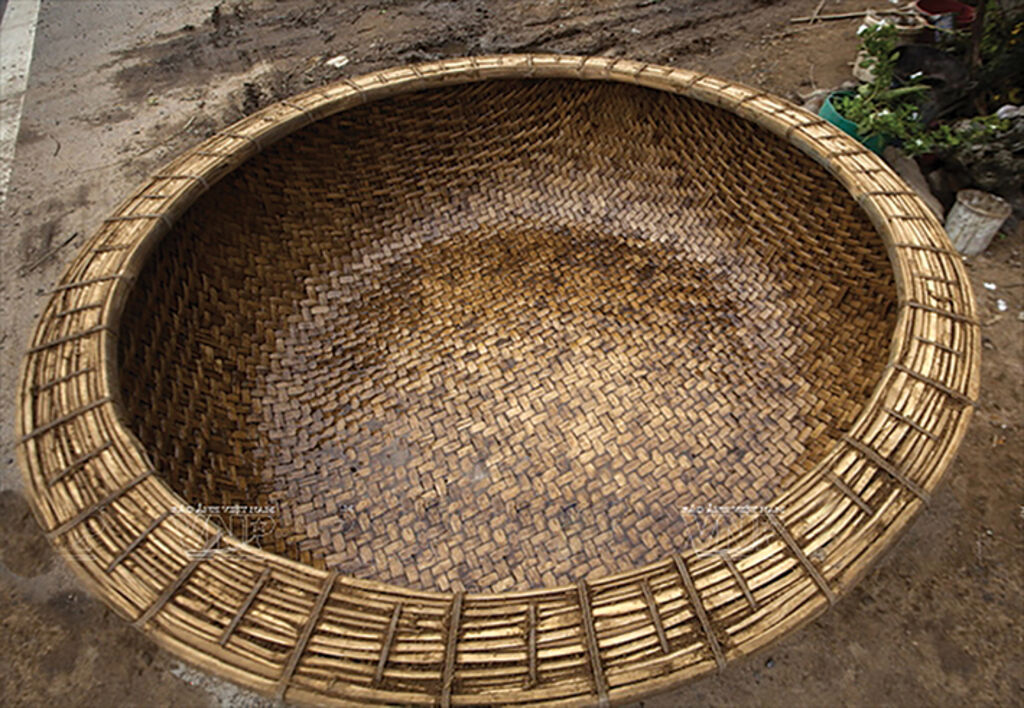 |
| It takes an experienced craftsman a week to complete the making of a bamboo basket boat__Photo: VNA |
The final step is to cover crevices of the boat with a special material - mixture of fresh cow manure and water so as to create a waterproofing layer to shield it from water. To increase its longevity and buoyancy, the boat is then sundried again for three days and coated with waterproof layers made from shorea guiso (blanco) blume bark powder, kerosene and dipterocarrpus alatus sap. With these coatings, each boat can last decades.- (VLLF)









